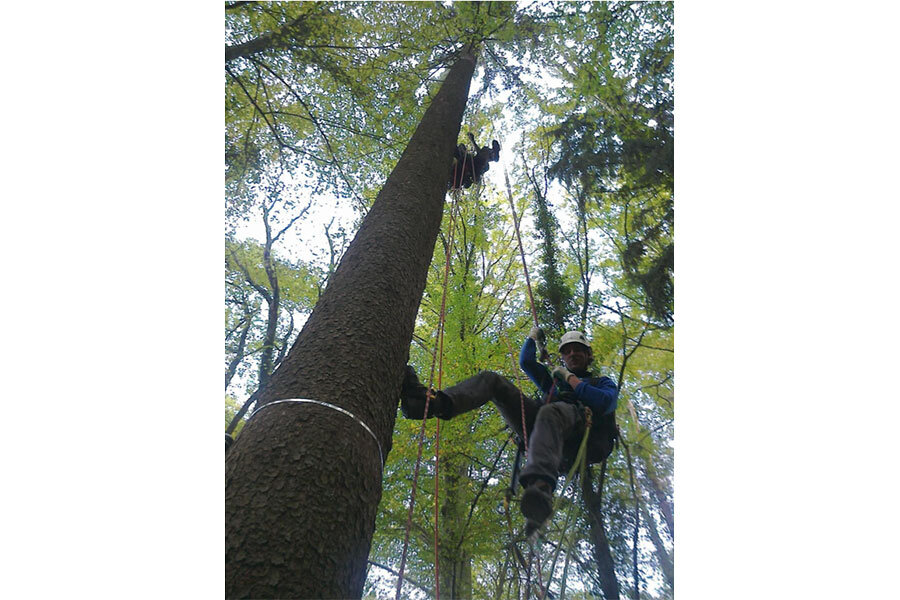A Swiss forest proves that even trees can share
Loading...
Walking in a mature forest, you might imagine that every parcel of sunlight, every soil nutrient, is wrestled over, as trees shoulder out rivals and fight to grow taller, wider, and stronger.
But that's not the whole story, says an international team of researchers. Their new study, published Thursday in the journal Science, documents the findings of a five-year research project in a Swiss forest, in which scientists demonstrated that mature trees share precious resources between one another, using a complex underground system of roots and fungi.
"The symbiotic relationship between plants and mycorrhizal fungi is widespread and present in almost any ecosystem investigated from tropical forest to temperate forests and grasslands," Marcel van der Heijden, a professor at Utrecht University in The Netherlands, who was not involved in the study, writes in an email interview with The Christian Science Monitor.
He says that 4 in 5 plants, or about 250,000 plant species, participate in this symbiosis.
The plants' lesser-known partners, mycorrhizal fungi, live in the soil and provide trees with up to 80 percent of their nitrogen and phosphorous needs, via the root systems. In exchange, the trees supply the fungi's carbon requirements. The relationship benefits both.
Previous research had shown that tree seedlings exchange carbon through this underground fungal network, but never before had the behavior been documented in adult trees.
Using a crane embedded in a Swiss forest, researchers spent five years pouring isotopically-depleted carbon dioxide gas over 40-meter-tall Norway spruce trees. By distinctly labeling the carbon entering the trees via photosynthesis, they were able to track its progress through the trees – and, surprisingly, into their neighbors.
One of the most startling revelations of this work is that not only are mature trees pooling their resources, but that this sharing takes place "between completely different tree species (spruce and beech)," explains Dr. van der Heijden, a mycorrhizal ecologist.
And this isn't a negligible overflow from one tree to another. Up to 40 percent of the carbon in fine root systems of temperate forests may be derived from neighboring trees, say the researchers.
This work may be just the beginning. Some evidence suggests that "not only carbon and nutrients but also signaling compounds (e.g. for plant defense) can move through these below ground hyphal networks from plant to plant," explains van der Heijden.
Scientists are starting to consider "whether mycorrhizal networks contribute to forest stability and plant fitness over evolutionary time," he says.








